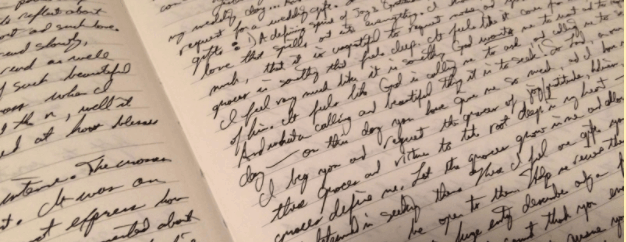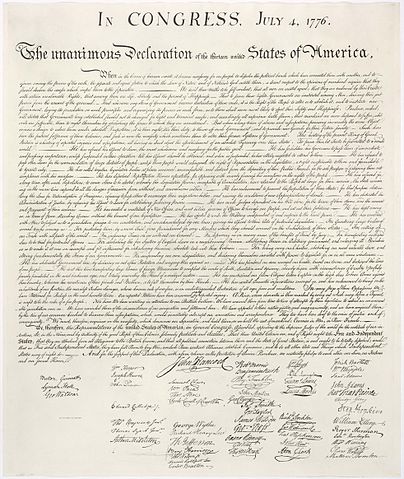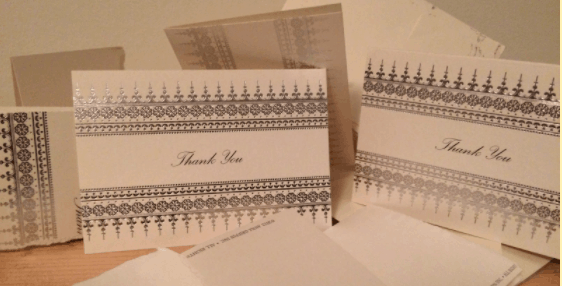I was once notorious for my handwriting, and I probably still am. I’d write on the board of my classroom, and my students would in unison tilt their heads, inevitably leading a brave soul to raise their hand, “Mr. B., HOW do you spell that?”
As I edit papers for my Jesuit brothers in the house, undoubtedly, I receive the follow-up questions: “So, what does this say? … and this? …and um, this? …”
My handwriting in school was a sore point, never higher than a “C” as far as I can remember. Of course, that was long ago. My handwriting has since evolved into a compressed, elongated, and slanted script—a script full of hybrid letters and capitals with flourishes. Beautiful? Perhaps. Legible? Not so much.

The author’s own script. Legible?
Yet for all my love of script, cursive is falling out of vogue in most schools. Honestly, it’s already gone from many curriculums. It’s the death of script as we know it! As cursive and script disappear, I find myself stuck with two questions: What’s replacing cursive and handwriting? Does it matter?
The origin of cursive is one which intertwines technology and efficiency. We get the word “cursive” from the Latin currere—literally, “to run.” It distinguishes writing in which the pen lifts from the page between words, rather than between each individual letter. Cursive developed out of typeface and print technologies, but more importantly it came from the need to write well and to write quickly.
But, cursive is fading. There is a debate over whether it has value in the classroom, but that debate extends further than simply a matter of cursive—it’s about writing itself. Many curricula are even favoring typing lessons over teaching handwriting.
The battle for cursive reaches deeper than questions of whether your letters “connect.” The pen—even more than the text—might say something about us. Our handwriting might indicate our nationalities and educational background, claims Adrienne Bernhard’s “What Your Handwriting Says About You.” Yet, Bernhard’s article also indicates that the proliferation of typing—via emails, text messages, etc…—might in fact undermine the distinctness of our handwritings. The battle for cursive has always been a battle for the uniqueness of our handwriting and ourselves, verses and the evolution of technology and push towards efficiency.

Cursive was the default business text.
Not too long ago, cursive—Spencerian script to be specific—“was the de facto standard writing style for business correspondence before the widespread adoption of the typewriter.”[1. Adrienne Bernhard, “What does your handwriting says about you” by BBC]. With the development of the typewriter, cursive fell out of business usage into the usage of personal correspondence; technology supplanted cursive’s original purpose, but cursive remained an act of self expression. We’ve certainly moved far beyond the typewriter. Emails, text messages, Facebook messages, Instagram posts, Snapchats, and all other forms of communication are efficient, instant, and succinct which leads to the question: is handwriting too slow for the times?
When is the last time you remember receiving a handwritten letter? Or realistically, when is the last time you wrote something? I don’t mean a scribble here, a doodle there, or even the casual grocery list… But, when was the last time you “wrote” instead of texted or typed?

Here lie the author’s discarded Thank You notes felled by poor penmanship.
I recently struggled through a series of short thank you notes. They were neither terribly in-depth nor long, but to write three short notes I used twice as many cards. Handwriting is hard—there is not a convenient backspace or delete. And then, what if the ink smudges? It’s not as neat, or clear, or as quick as typing.
But, maybe it’s the slight inconvenience that adds value. Letters in the mail feel quaint and antiquated, but they also feel rare and extraordinary. Handwritten notes of encouragement feel like treasures—often worth saving for rainy days and tough times. The short “happy birthdays” I recently received in a card, somehow meant something more than the similar FB messages.
Handwriting says something deep about us. It might be pretty with loops and swoops of embellishment, or maybe just a chicken-scratch mess of print, but it reflects the time we took to deliver the message. The flourishes and blots punctuate our meanings and accentuate our pauses—implanting a little of ourselves onto the page. Handwriting matters, partly because of its uniqueness and partly because of the intentionality behind it. While emojis might be quick, Gifs might be clever, and memes might be amusing… the pen holds the potential to capture a little of yourself and to give it to the other person.


